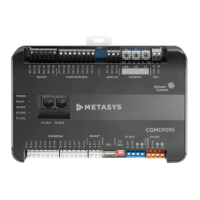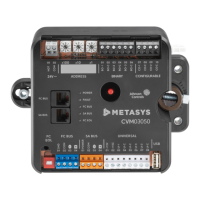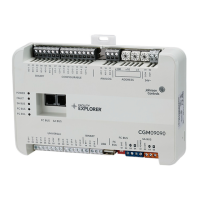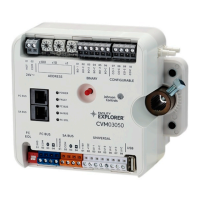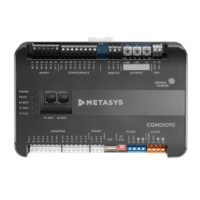CK721-A Installation and Operation Introduction
24-10349-8 Rev. B 1-3
This document contains confidential and proprietary information of Johnson Controls, Inc.
© 2012 Johnson Controls, Inc.
Expansion Enclosure – An expansion enclosure contains only a power supply, a tamper
switch and a power indicator. The indicator can be seen when the cabinet door is closed.
External Device – This general term applies to any device that is wired to the CK721-A
system, such as a reader or input device. A motion sensor is one type of input device.
File Transfer Protocol (FTP) – A standard network protocol used to transfer files from one
host to another over a TCP-based network.
Modules – The modules provide additional reader interfaces, input points, or output relays to
the CK721-A system. Modules can be installed in the S300 expansion enclosures; RDR2S,
RDR2S-A, I8O4, RDR8S, and I32O16 modules can be installed in the S300-DIN
enclosures.
Panel – This generic term refers to an enclosure with the CK721-A and power supply
installed. The panel contains a tamper switch, a power indicator light, and an optional battery
backup.
Secure FTP (SFTP) – A program that uses SSH to transfer files. Unlike standard FTP, it
encrypts both commands and data, preventing passwords and sensitive information from
being transmitted in the clear over the network. It is functionally similar to FTP, but because
it uses a different protocol, you can't use a standard FTP client to talk to an SFTP server, nor
can you connect to an FTP server with a client that supports only SFTP.
Secure Shell (SSH) – A network protocol that allows data to be exchanged using a secure
channel between two networked devices.
Telnet – A network protocol used on the Internet or local area networks to provide a
bidirectional interactive text-oriented communications facility using a virtual terminal
connection
User Interface – The CK721-A User Interface provides access to the CK721-A panel
configuration graphical user interface (GUI) via a serial connection to a laptop (or other
computer) running common terminal emulation software or via Telnet/SSH/SFTP network
connection.
UNPACKING THE EQUIPMENT
Carefully inspect the shipping containers as soon as you receive them (with the delivery
agent present). Some shipping companies want to have an agent present when a damaged
container is opened. If a container is damaged, open it immediately, inspect the contents, and
have the agent make note on the shipping document. Check the purchase order against the
packing slips to ensure the order is complete. If the contents of a container are damaged in
any way, notify the carrier and your Johnson Controls
®
representative immediately. Report
any discrepancies to your Johnson Controls representative. Save the packing materials for
possible return shipments.

